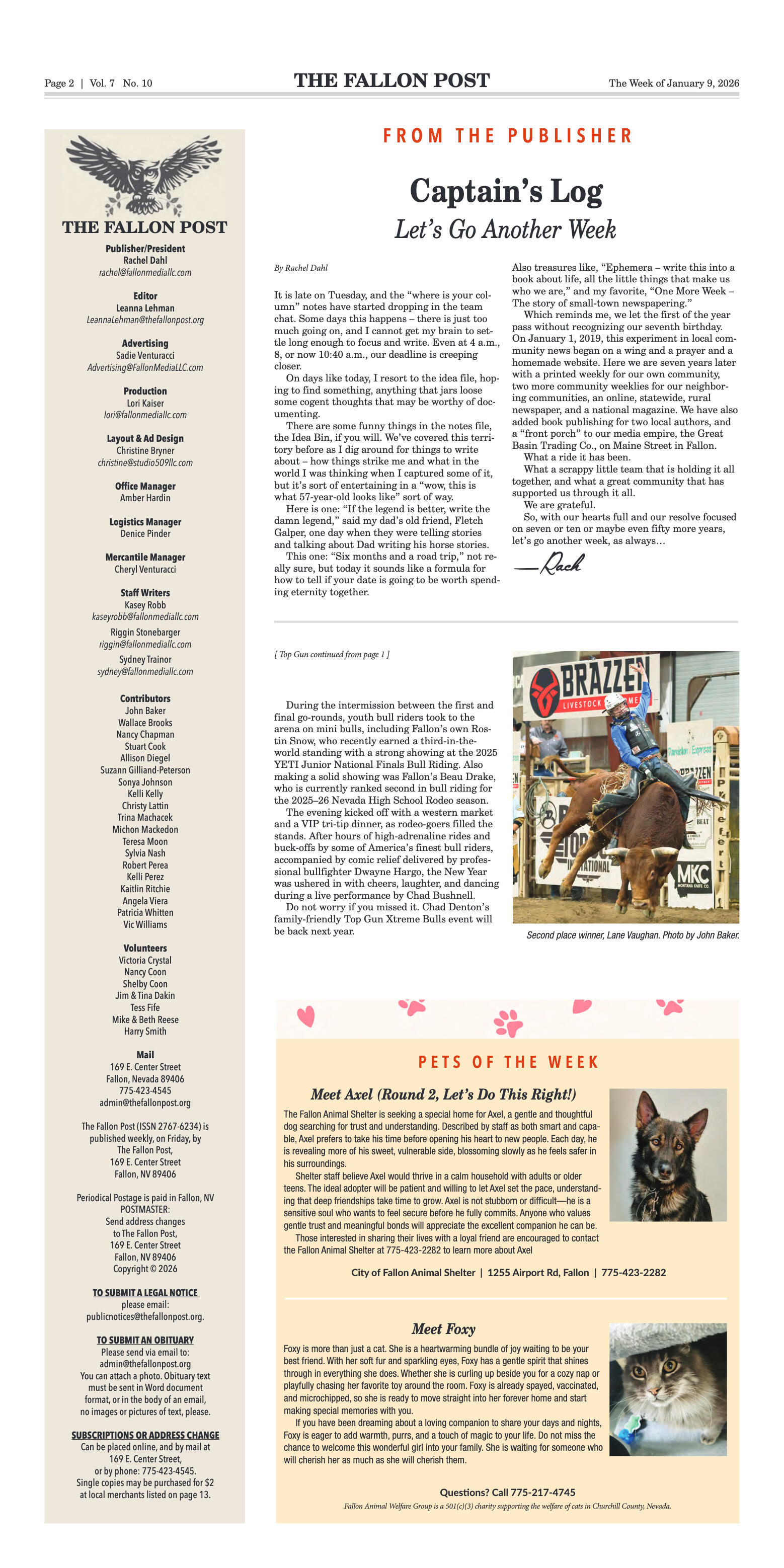The Environmental Protection Agency has extended the public comment period until February 15, 200 on their proposed plan addressing historical releases of mercury throughout the Carson River watershed.
Both Churchill County and the City of Fallon have submitted comments regarding the plan, asking the EPA for clarification and some assurances on proposed future actions, specifically, EPA involvement in residential development and restrictions on hunting and fishing.
The City of Fallon pointed out in their letter to the EPA that the Superfund designation was made in 1990 and thirty years have passed with ongoing monitoring and advisement against consuming fish and waterfowl harvested from Lahontan Reservoir or the waters below the reservoir. The city objected to any official prohibition of fishing or hunting.
The new Proposed Plan addresses the Carson River where old mercury can be found in the sediments and floodplain of the Carson River, Lahontan Reservoir, Carson Lake, Little and Big Washoe Lakes, Indian Lakes, and the Stillwater and Fallon National Wildlife Refuges. Studies by the United States Geologic Survey found Lahontan Reservoir traps up to 92% of the mercury entering the reservoir while mercury in surface water and soil contamination decreases significantly below Lahontan Reservoir. The EPA has advised for years against eating fish caught in these areas.
The Proposed Solution is an interim approach that uses a combination of land use controls, compliance and monitoring, and environmental covenants which means a voluntary title insurance notice on properties to help prevent exposure to mercury-contaminated soils.
Churchill County submitted a letter asking for clarification on language regarding land use controls and monitoring of commercial and residential development along the Carson River. Alternative 2, chosen as the preferred alternative by the EPA, would provide agency oversight and guidance for any development, residential and commercial, as well as management for future construction activities in the floodplain or active channels performed by landowners or government agencies.
“Terms such as ‘oversight’, ‘guidance’, and ‘management’ are very broad and generally vague,” read the comments, “It is unclear how this proposal will impact development projects in this section of the river.” The county letter said developers need to have a better understanding of the involvement the EPA and NDEP may have when a project moves forward. The county does support education measures and voluntary compliance.
Additionally, addressing the effectiveness of the reservoir in trapping mercury, the county said adjustments to the level of EPA and NDEP involvement below the reservoir would be justified. The county letter also reiterates how important the work of the county and Truckee-Carson Irrigation District to clean out the river below the reservoir is for flood control and requested language in the plan that would ensure the EPA does not impede that work.
In the Proposed Plan released this September, the EPA evaluated the benefits and costs of cleaning up mercury contamination in the river, reservoir, and wetlands. The agency anticipates signing a Record of Decision by late in the year 2023.
According to the plan document, the interim action is intended to reduce health risks and will support a final cleanup action that will be selected in the future.
In 1990, the Carson River Mercury Superfund Site became a part of the National Priorities List. The EPA site investigation found mercury used to process gold and silver ore in the 1860’s Comstock Lode covering five counties, 330 square miles, and more than 130 river miles. The EPA removed contaminated soil in areas of the Carson River’s Operable Unit 1 and developed a Long-Term Sampling and Response Plan. They also worked with developers to help prevent the spread of mercury contamination when the soils are disturbed for new residential developments. The EPA has worked closely with the Nevada Department of Environmental Protection throughout the process.
In April 2017, the EPA completed a Remedial Investigation looking at where and in what concentrations the mercury contamination had traveled. In December the following year, they did a Feasibility Study to screen and evaluate technologies and approaches to reduce mercury exposure that would be appropriate for the extensive geography of the Carson River.
The agency is currently asking for suggestions, comments, and questions from all interested parties before making their final decision. A copy of the EPA report along with the contact information for feedback can be found at the Churchill County Library.







































Comment
Comments